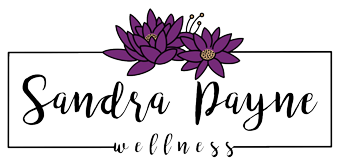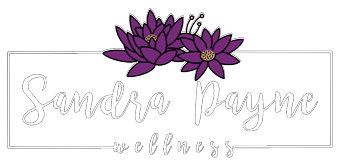The Teacher Inside Us All.
It’s hard to decide where to even start with all that I want to share with you about my past weekend experience taking a Meditation “Teacher” training. I put “teacher” in brackets with a smile on my face because when I signed up for the training I had this expectation that it would be a course on styles of meditation, scripts, and different guiding tools ect. I’m certain that there are classes out there like that, but this was not it. Before you think that this means I was disappointed let me stop you. This training far exceeded any expectations that I had. It was indeed a teacher training but not in the sense of what I and many of the other participants had thought.
I’ve had a bit of experience over the last few years with various styles of meditation and have felt the benefits first hand. But this weekend took it to a whole other level. This was an incredibly beautiful transition into a deeper meditation, free from the scripted words and the pretense of what a lot of people think meditation is. It transcended just the calming relaxing benefits of meditation into the true realm of self-discovery.
Meditation for me is about connection to yourself and the greater universe, freedom, exploration, understanding, clarity, expansion, and discovery. It’s about going deep and peeling back the layers that have been covering the true you and your limitless power and potential.
I’ve said the words many times about discovering yourself, building self-love and self-trust, and reclaiming your power. It’s literally the description I use for my “Full to Fulfilled” coaching program. These words however felt disconnected because I was trying to make the understanding of them in my conscious mind without consideration of the source. The source is me. It the truest purest most beautiful essence of who I am. That’s where the words originated and that’s where they make sense.
Finding the Light.
If you’re new to the spiritual realm or the meditation practice then you might be feeling a bit confused. First of all that’s ok. It’s a learning that will grow over time and maybe this story will help you understand.
Many years ago I was trapped in an abusive relationship. We were together for 6 years roughly and it was awful and horrific. The most prominent abusive behavior was the emotional trauma inflicted upon me, reducing me and covering me with negative beliefs and fears about myself and my worth. This period of my life was like living in a prison. I always thought that prison was the physical and external barriers that kept me chained in that life day after day, but the prison as I see it now, was the heavy layers of darkness that had built around and over my inner light, my true self, my pure essence. It was lost, out of reach, and it felt in the external world that it would be impossible to ever feel alive again. I wanted to take my life, to escape in the only way I thought possible. Thankfully that light inside was stronger than I was even remotely aware of. One cold November morning, in an almost out of body experience, I picked up the phone to call my mom to ask her to come help me get out. She saved me that day, but the other truth is that I saved myself. I never quite knew what gave me the strength to call her. I thought possibly divine intervention, but I had this feeling that it was something else even more powerful. I now know without any doubt, that the power that set me free, was me.
Feeling Lost.
3 years ago when I finally admitted a truth inside of me it created a lot of questions, and I see now as my journey unfolds, that many people have the same questions. We look around at all of our accomplishments and wonder what it’s all for? Is this it? What’s missing?
I too searched. I thought first it was my lack of spiritual beliefs. And so I explored and found a belief that resonated with me and begun a sporadic meditation practice to try to connect with an external source. The unfulfilled feeling improved but was still lingering. Then I looked at my relationships, then my career, but no matter how many changes I made it still wasn’t enough. Something was still pulling me to find something more… but what. It was frustrating and angering and sad. Then I started to feel like maybe there was something wrong with me that I felt this way. I felt depressed and so lost. It was an all too familiar feeling I’ve had over the course of my entire life. Until I realized that all this time the answer was staring right back at me. It wasn’t something that I needed to change or achieve. It was me. It was the deeply covered me that was screaming and crying to be recovered.
Sitting With Sadness
I’ve done a lot of work dealing with my sadness and grief that has existed in me for as long as I can remember, but the goal has always been to make it go away. To resolve it and live my life without it. I see now that this is not the right approach to take. We can’t “fix” how we feel because we aren’t broken. So much of my life I have felt that there was something wrong with me and people were consistently trying to fix me. This is something no one should ever have to feel. To feel broken and flawed because of a belief our mind and society’s collective mind has created. And this belief is the recipe for receiving a label in our society that further contributes to a greater level of self-hate, self-pity, worthlessness, hopelessness, and “attempted” destruction of our true authentic selves. I’ve been there, for so many years I lived this belief and it buried who I was. But by being honest with myself and curiously asking the questions instead of hiding in my minds creation of doubt and fear I’ve found many answers.
This past weekend if I had to guess, I probably spent at least 10 of the 22 hours there in meditation. Every time I found the light in me it brought profound sadness with it. My light will never extinguish, it’s forever, as is yours, but it’s gets hidden and buried and can feel lost forever. I decided through meditation to attempt a different approach and have a conversation with my sadness to find out what it wants from me (my true me, not my mind). Here’s how that conversation went.
After singing mantra for what seemed like a long time with tears streaming down my face we reached the quiet meditative time, and so deep inside of me I asked the question… Sadness, what do you need from me? The answers came clear. Sadness responded, I don’t want to be hidden anymore, I want you to feel me and welcome me, I want to belong with you and have a voice, I don’t want to feel shame and be tucked away, I am crying to be set free. After a long pause, amidst tears and a heavy sensation I responded. I am so sorry that you have been burdened this way, and I want you to know that I too feel the same. I also have been hidden and lost for a long time. With a warm softening of the weight I asked, what do you say we both link arms and be free together? I am taking back control of this kingdom and everyone will have a voice, no one will be shadowed any more. Sadness smiled and said, we should probably take anger with us too. As we moved freely towards the surface together I felt happiness, excitement and peace join us.
With Answers Come Questions.
It was a profound experience and gave me so many answers, and so many more questions. The lightness of knowing is what we are all seeking. To relieve the burden of needing to have answers and a plan to letting go, finding security and trust in our true selves to guide our way. The connection this entire weekends experience has had to those words I mentioned that I speak so frequently has been incredibly affirming of where I’m headed.
So, if you are out there wondering what’s missing you can stop looking, because the answer is right there shining brightly inside of you. The process to find it is about rediscovering yourself, rebuilding your love and trust in yourself, and reclaiming the seat as the Ruler in your life. It’s all there for you. You’re asking the questions for a reason and the answer comes when you start listening.
If you’re unsure about how to get started with Meditation please reach out and allow me the honor to help guide you to get your daily practice started. It only takes 5 minutes a day to uncover your deepest truest self.








